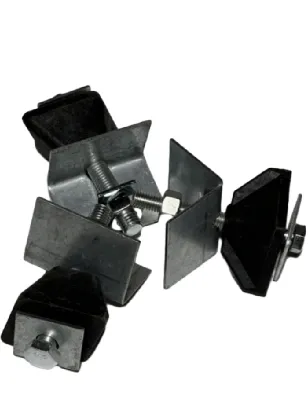loading...
- No. 9, Xingyuan South Street, Dongwaihuan Road, Zaoqiang County, Hengshui, Hebei, China
- admin@zjcomposites.com
- +86 15097380338
- Welcome to visit our website!
frp rod manufacturers
FRP Rod Manufacturers Innovations and Applications in Modern Industries
Fiber Reinforced Polymer (FRP) rods have emerged as a revolutionary solution in various industries due to their superior strength, lightweight properties, and resistance to corrosion. As the demand for sustainable and durable construction materials grows, FRP rod manufacturers are at the forefront of innovation, providing advanced products that meet the needs of diverse applications.
FRP rods are made by combining a polymer matrix with fibrous materials such as glass, carbon, or aramid. This composite material exhibits exceptional mechanical properties, making it suitable for use in environments that are typically hostile to traditional materials like steel. One of the main advantages of FRP rods is their high strength-to-weight ratio. This characteristic allows for easy handling and installation, reducing labor costs and time during construction projects.
FRP Rod Manufacturers Innovations and Applications in Modern Industries
The application of FRP rods spans various sectors, including construction, infrastructure, and marine engineering. In construction, they are widely used as reinforcement in concrete structures, providing additional tensile strength without the risk of corrosion associated with steel. This is especially critical in environments exposed to moisture and chemicals, such as bridges, tunnels, and coastal structures. FRP rods' resistance to chemical attack ensures that structures maintain their integrity over time, leading to lower maintenance costs and extended service life.
frp rod manufacturers

In the field of electronics, FRP rods are utilized for their excellent insulating properties. They are commonly found in antennas and support structures for electrical lines, where traditional metal components may jeopardize performance due to conductivity issues. Additionally, the automotive industry benefits from the lightweight nature of FRP rods, which can improve fuel efficiency by reducing vehicle weight while maintaining structural integrity.
Moreover, the use of FRP rods in renewable energy applications, such as wind turbine blades and solar panel supports, highlights their versatility. As the world shifts towards greener technologies, the demand for lightweight, durable materials is expected to rise, making FRP rods a critical component in achieving sustainability goals.
As more companies recognize the advantages of using FRP rods, the number of manufacturers in the market continues to grow. This increase in competition drives innovation and lowers prices, making FRP materials more accessible to a broader range of industries. Manufacturers are also focusing on customizing products to meet specific requirements, catering to the unique needs of each project.
In conclusion, FRP rod manufacturers play a crucial role in advancing material technology across multiple industries. Their commitment to innovation and quality not only enhances the performance of structures but also contributes to sustainable development. As the demand for robust, lightweight, and corrosion-resistant materials continues to rise, FRP rods are poised to become a staple in construction and engineering, paving the way for a more durable and efficient future.
-
The Rise of FRP Profiles: Strong, Lightweight, and Built to LastNewsJul.14,2025
-
SMC Panel Tanks: A Modern Water Storage Solution for All EnvironmentsNewsJul.14,2025
-
GRP Grating: A Modern Solution for Safe and Durable Access SystemsNewsJul.14,2025
-
Galvanized Steel Water Tanks: Durable, Reliable, and Ready for UseNewsJul.14,2025
-
FRP Mini Mesh Grating: The Safer, Smarter Flooring SolutionNewsJul.14,2025
-
Exploring FRP Vessels: Durable Solutions for Modern Fluid HandlingNewsJul.14,2025
-
GRP Structures: The Future of Lightweight, High-Performance EngineeringNewsJun.20,2025
